Whole rock analysis
Type of resources
Topics
Keywords
Contact for the resource
Provided by
Years
Formats
Representation types
Update frequencies
-

Complete major and trace element analyses of all samples investigated under project component chalcophile element processing beneath arc volcanic systems, within NE/M000427/1 (see Cox et al., EPSL, 2019 https://doi.org/10.1016/j.epsl.2019.06.017 and Cox et al., Geology, 2020 https://doi.org/10.1130/G47562.1). Samples include an extensive dataset from Antuco volcano, Chile, and further analyses of young volcanic rocks from multiple Chilean stratovolcanoes and monogenetic centres. Standard data are also provided.
-

Major and trace elements data for whole rock and clinopyroxene; major elements data for glassy groundmasses; BSE (back-scattered electron) images of clinopyroxene; Fe-Mg elemental diffusion timescales of clinopyroxene; LA-ICP-MS chemical maps of clinopyroxene.
-
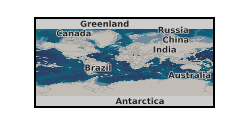
Whole rock assay data for the El Teniente, Skouries and Muratdere porphyry Cu deposits. Samples were selected for analysis from boreholes in the Muratdere Cu-Au-Mo porphyry deposit, Western Turkey; and the Skouries Cu-Au porphyry deposit, Greece; and samples from the El Teniente Cu-Mo porphyry deposit were selected from the Natural History Museum London’s ore collection. This data contains whole rock assay data performed by ALS, comprising the whole rock concentration of metals and semi-metals from the three deposits. This data was collected as part of the TeaSe consortium NERC grant in order to determine the concentration and hosting of critical and precious metals in various types of ore deposits and barren rocks from different geological environments.
-
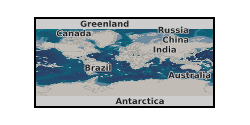
Major and trace element data for partial melts derived from high pressure-temperature experiments on a basaltic starting composition from the Ontong Java Oceanic Plateau.
-
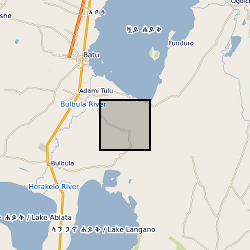
Geochemical analysis of and Ar/Ar dating for volcanic samples from Aluto volcano, Ethiopia. Data are referenced in Hutchison et al., 2016c: The eruptive history and magmatic evolution of Aluto volcano: new insights into silicic peralkaline volcanism in the Ethiopian rift; https://doi.org/10.1016/j.jvolgeores.2016.09.010
-
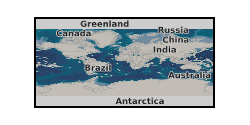
Whole rock and sediment geochemical data covering a range of elements, where values are given in ppm (parts per million) or as a % (percentage). The data is ordered chronologically in an excel spreadsheet and each sample is given a ‘Sample ID’, ‘Lithology’, ‘Locality’, ‘Age’ and ‘Date analysed’, followed by whole rock and sediment values for the following elements; Ag, Al, As, Au, B, Ba, Be, Bi, Ca, Cd, Ce, Co, Cr, Cs, Cu, Fe, Ga, Ge, Hf, Hg, In, K, La, Li, Mg, Mn, Mo, Na, Nb, Ni, P, Pb, Pd, Pt, Rb, Re, S, Sb, Sc, Se, Sn, Sr, Ta, Te, Th, Ti, TI, U, V, W, Y, Zn, Zr. Cells which are highlighted orange signify that the value given was below the detection limit. The values in orange cells have been halved to maintain spreadsheet functionality (i.e. to remove ‘<’ symbols). Cells which have been highlighted blue signify that the value given was above the detection limit. ALS method:ME-MS41L (https://www.alsglobal.com/en/services-and-products/geochemistry/geochemistry-testing-and-analysis/whole-rock-analysis-and-lithogeochemistry) . The majority of the samples included in this data were collected in the UK, but, where appropriate, samples out with the UK were included. The majority of the data was collected from 2014 to 2019. Whole rock and sediment samples were analysed by solution ICP-MS. Samples of ~30 g were individually milled and homogenised, and 0.5 g were digested with aqua regia in a graphite heating block. The residue was diluted with deionised water (18 M¿ cm), mixed, and analysed using a Varian 725 instrument at ALS Minerals (Loughrea; method ID: ME-MS41L). This data was collected to better understand the low temperature cycling of Telurium (Te) and Sellenium (Se) in the geological environment. For example, a range of ochre samples were included in this database. Ochres are a modern precipitate commonly found in rivers and streams which flow through geographical areas with a history of mining resources which are rich in sulphides. Iron from the sulphides are leached out and deposited downstream, coating river and stream beds, giving a red, yellow or orange colouration. Ochres can be a sink for trace metals, so analysing the abundances of these can be informative from a resource perspective but also from an environmental hazard perspective. This would be useful for researchers who require reference data for whole rock and sediment data of a particular lithology or age. This data is was collected by, but not limited to the following individuals; John Parnell, Sam Spinks, Josef Armstrong, Liam A Bullock, Magali Perez, Xueying Wang & Connor Brolly.
-
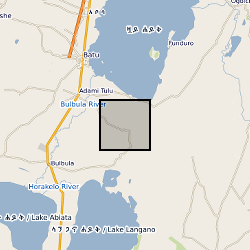
Geochemical analysis of volcanic samples from Aluto, Fentale, and Kone volcanoes, Ethiopia. Data are referenced in Iddon et al., 2018: Mixing and Crystal Scavenging in the Main Ethiopian Rift Revealed by Trace Element Systematics in Feldspars and Glasses; https://doi.org/10.1029/2018GC007836.
-

Petrographic, whole-rock, quartz and zircon geochemistry, zircon Lu-Hf isotopes, molybdenite Re-Os geochronology and zircon U-Pb CA-ID-TIMS data from the Yerington Batholith, Nevada, USA. This data set comprises 10 .xlsx files collected during 2017-2022, as summarised below. They are each numbered as per their place as Supplementary Data within L. C. Carter’s PhD thesis “Exsolution depth and migration pathways of mineralising fluids in porphyry deposit-forming magmatic systems” (Camborne School of Mines, University of Exeter). 3.1_QEMSCAN data – QEMSCAN automated mineralogical assessment of a thin section made from drill core from the Ann Mason porphyry deposit, containing quartz unidirectional solidification textures (USTs) interlaid with aplite, hosted within an aplite dyke that cross-cuts a porphyry dyke. Analysed at Camborne School of Mines. 3.2 EPMA data – trace elements (Ti, Fe, Al) of quartz USTs, measured by EPMA spot analysis at Camborne School of Mines. 4.1 EPMA and IBA analyses – trace elements of quartz in miarolitic cavities and aplite dykes, measured by EPMA spot analysis at Camborne School of Mines and Total-IBA at UKNIBC, University of Surrey. Also includes Total-IBA map of titanium in quartz in a miarolitic cavity hosted in an aplite dyke. 4.2 QEMCAN data - QEMSCAN automated mineralogical assessment of a thin section of a mineralised miarolitic cavity hosted within an aplite dyke which cross-cuts the Luhr Hill granite. Analysed at Camborne School of Mines. 5.1 Full sample list – Full sample list for the following data sets. 5.2 Geochronology data – Zircon U-Pb CA-ID-TIMS geochronology data from across the Yerington batholith, analysed at NIGL, BGS. Molybdenite Re-Os geochronology data from the Ann Mason porphyry deposit, analysed at Durham University. 5.3 QEMCAN data - QEMSCAN automated mineralogical assessments of thin sections of a miarolitic cavities hosted within aplite dykes. Analysed at Camborne School of Mines. 5.4 Whole rock geochem data – Whole rock major (XRF) and trace element (ICP-MS) geochemistry data, analysed at University of Leicester. 5.5 Zircon LA-ICP-MS data – analysed at Natural History Museum, London 5.6 Zircon Lu-Hf isotope data – analysed at NIGL, BGS. Together, these files form the supplementary data files for L.C. Carter’s PhD thesis “Exsolution depth and migration pathways of mineralising fluids in porphyry deposit-forming magmatic systems” (Camborne School of Mines, University of Exeter). Please refer to the thesis for further details. These data are previously published as Carter et al. (2021, Communications Earth & Environment), Carter and Williamson (2022, Ore Geology Reviews) and Carter et al. (2022, Scientific Reports).
-

Geochemical data has been collected on samples from new exposures of the 1883 deposits, revealed by the 2018 tsunamigenic flank collapse of Anak Krakatau, which provides improved stratigraphic context. Whole-rock data taken by X-ray Florescence shows no systematic stratigraphic correlation. Chemical data for transects across, and spot points on, plagioclase phenocrysts, including some trace element data, all obtained using Electron Probe Microanalysis (EPMA), with Backscatter electron (BSE) images of crystals, obtained using Scanning Electron Microscope, reveal complex zoning profiles. However, chemical data for transects across pyroxene phenocrysts, obtained using EPMA, show this phenocryst phase is largely unzoned. The dataset also includes chemical data for spots on Fe/Ti oxides, included on the rims of pyroxene, and obtained using EPMA. Matrix glass chemistry, obtained via EPMA, shows that the early eruptive ash is more evolved than the pyroclastic material that follows, and that there is a slight overall trend to a more homogenous, less evolved melt composition. The 1883 eruption of Krakatau was a large, cardera-forming eruption that caused approximately 36,000 fatalities. It is also the only eruption of its size to have accompanying written accounts.
 BGS Data Catalogue
BGS Data Catalogue